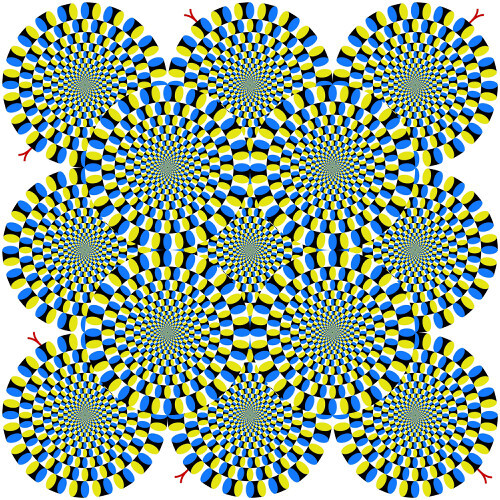
By Will Dunham
(Reuters) -A clay figurine about 12,000 years old that was unearthed at the site of a prehistoric village overlooking the Sea of Galilee in northern Israel depicts a woman and a goose in what may be one of the world's oldest renderings of a mythological scene.
Researchers said the figurine, about 1.5 inches (3.7 cm) tall, was discovered inside a semicircular stone structure about 16 feet (5 meters) in diameter at a site called Nahal Ein Gev II. The village was part of the Natufian culture of Southwest Asia, which straddled the prehistoric transition between nomadic hunter-gatherers and settled agriculturally based communities.
It is the earliest-known figurine worldwide showing human interaction with an animal, according to Laurent Davin, a postdoctoral researcher in archaeology at the Hebrew University of Jerusalem and lead author of the study published on Monday in the journal Proceedings of the National Academy of Sciences. It is also the oldest-known naturalistic, rather than stylized, portrayal of a woman in art from Southwest Asia, Davin said.
The goose is positioned on the crouching woman's back with its wings spread in a typical mating posture. The scene offers insight into this prehistoric culture's belief system, Hebrew University archaeologist and study co-author Leore Grosman said.
"We interpreted the interaction scene as the depiction of the imagined mating between an animal spirit and a human. This theme is very common in animistic societies across the world in specific situations such as erotic dreams, shamanistic visions and myths," Grosman said.
Animism is a belief system holding that natural things - living organisms such as plants and animals and inanimate objects like rocks and rivers - possess a spiritual essence.
"The scene itself - depicting a sexualized interaction between a human and an animal - is part of a long tradition in myth. Such imagery is rarely meant to be literal. Instead, it often symbolizes fertility, spiritual beliefs or the sacredness of life," University of Connecticut anthropologist and study co-author Natalie Munro said.
"In many myths across history and cultures, gods or beings take on hybrid human-animal forms to convey symbolic meanings, not actual sexual activity," Munro said.
The figurine appears to be the oldest example of a mythological scene in Southwest Asia and one of the oldest worldwide, but is younger, for example, than an apparent mythological scene among the Lascaux Cave paintings in France dating to roughly 18,000 years ago, the researchers said.
The figurine was sculpted from clay that was allowed to dry before being fired to make it durable, and later was colored with a red pigment, traces of which survive. A fingerprint of the sculptor can be seen on the figurine.
The object showcases new artistic innovations for its time. The sculptor used light and shadow to create a sense of depth and perspective, methods that would fully flourish much later.
"Given the way it was modeled, with an emphasis on its left profile, we know that this figurine was probably displayed in a particular spot to receive light, from the sun or a fireplace, on its left profile to reveal the play of light and shadows that brings to life the interaction between the goose and the woman," Davin said.
Such figurines may have served as ornaments, amulets with magical or protective properties or as props to tell stories. This one may have been part of a staged installation that village inhabitants would come to observe, Davin said.
At some point, it was buried in the fill of the structure where the researchers found it along with other objects possessing ritual meaning such as a cache of human teeth and the remains of a child.
The Natufian culture's people were the first hunter-gatherers in Southwest Asia to adopt a sedentary lifestyle, a dramatic transformation that predated the embrace of farming. This village's inhabitants hunted gazelles, practiced elaborate crafts including weaving and collected raw materials nearby such as flint and limestone.
The site bore remains of geese, with evidence of hunting, butchering and feather use. Notably, the figurine's scene was unrelated to hunting.
"The implication of this discovery," Grosman said, "is that the sedentary lifestyle generated major transformations in social structures - both between humans and between humans and their surrounding environment - which then led to major transformations in storytelling, symbolic expression and artistic techniques."
(Reporting by Will Dunham in Washington; Editing by Daniel Wallis)
 60年前に発表のクレーンゲーム機クラウン602、情報提供呼びかけ…タイトー「当社の技術の原点」(読売新聞オンライン)
60年前に発表のクレーンゲーム機クラウン602、情報提供呼びかけ…タイトー「当社の技術の原点」(読売新聞オンライン) 津田寛治が津田寛治役“良い意味で狂気”「朝から晩まで」津田寛治演じ 主演映画「津田寛治に撮休はない」(スポニチアネックス)
津田寛治が津田寛治役“良い意味で狂気”「朝から晩まで」津田寛治演じ 主演映画「津田寛治に撮休はない」(スポニチアネックス) Meet the Stars of the Feline World: Well known Pet Feline Varieties
Meet the Stars of the Feline World: Well known Pet Feline Varieties Vote In favor of Your #1 sort of film
Vote In favor of Your #1 sort of film JR東海・丹羽社長、トランペットで応援 社会人野球日本選手権(毎日新聞)
JR東海・丹羽社長、トランペットで応援 社会人野球日本選手権(毎日新聞) AIも惑う、脳の勘違い「錯視」…特性生かした商品開発も(読売新聞オンライン)
AIも惑う、脳の勘違い「錯視」…特性生かした商品開発も(読売新聞オンライン) 金屏風の前で婚約指輪披露も!中村橋之助さんと元乃木坂46能條愛未さんが婚約会見「幸せです!」プロポーズはハワイのレストランで(FNNプライムオンライン(フジテレビ系))
金屏風の前で婚約指輪披露も!中村橋之助さんと元乃木坂46能條愛未さんが婚約会見「幸せです!」プロポーズはハワイのレストランで(FNNプライムオンライン(フジテレビ系)) 再生二期作、乾田直播、猛暑に強い米「手間を省き、手頃な米づくり」米農家の挑戦 #生活危機(Yahoo!ニュース オリジナル 特集)
再生二期作、乾田直播、猛暑に強い米「手間を省き、手頃な米づくり」米農家の挑戦 #生活危機(Yahoo!ニュース オリジナル 特集) German finance minister seeks better market access in China talks
German finance minister seeks better market access in China talks












